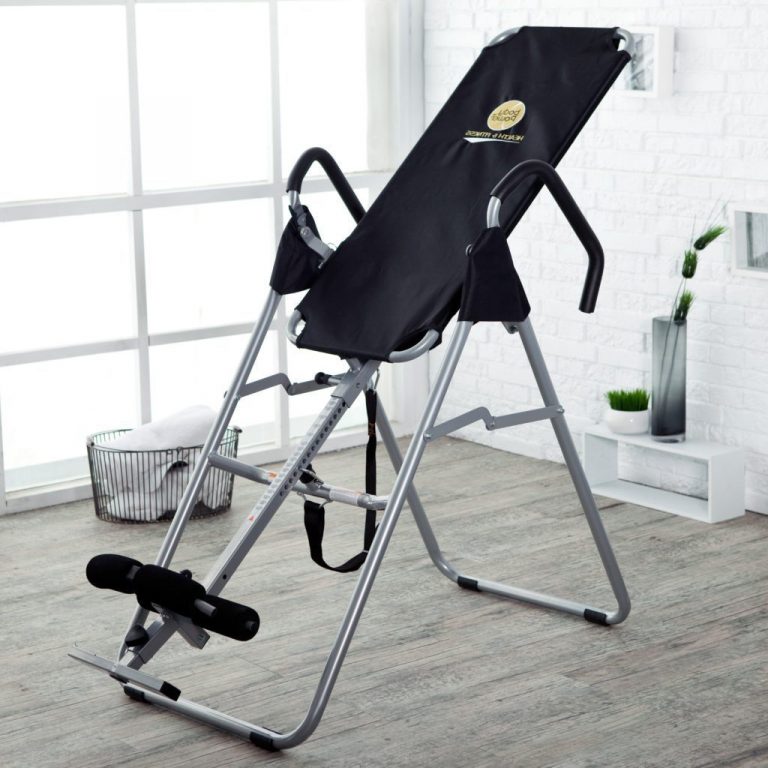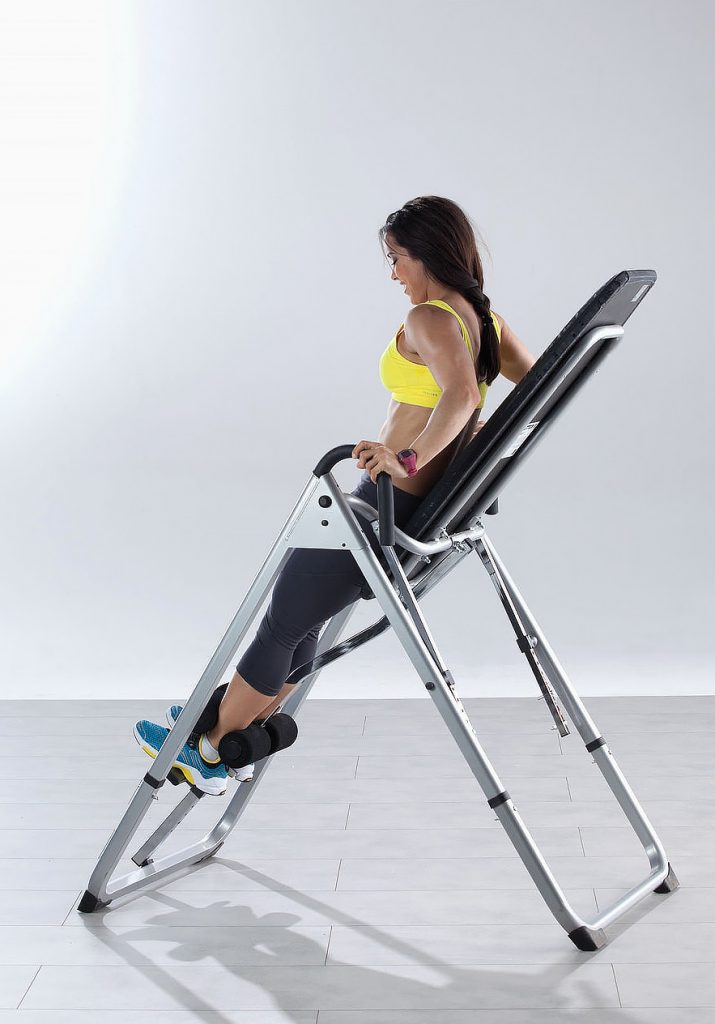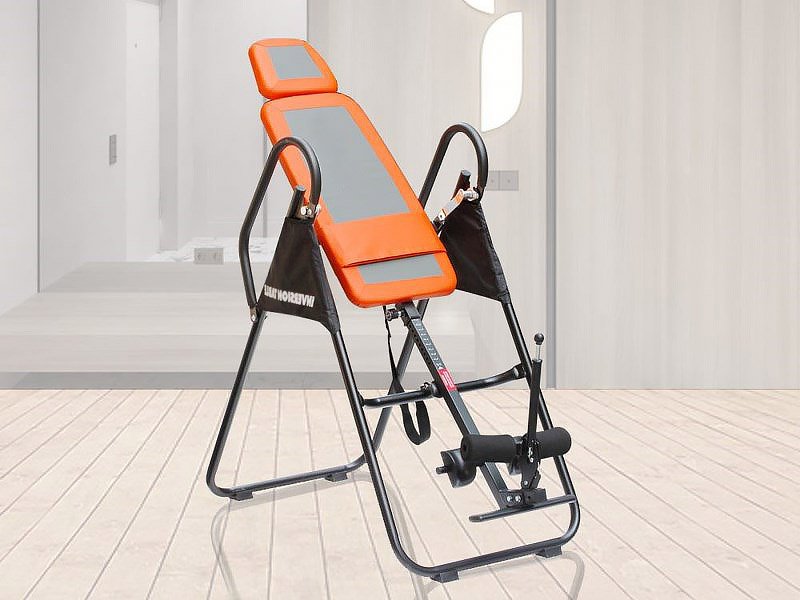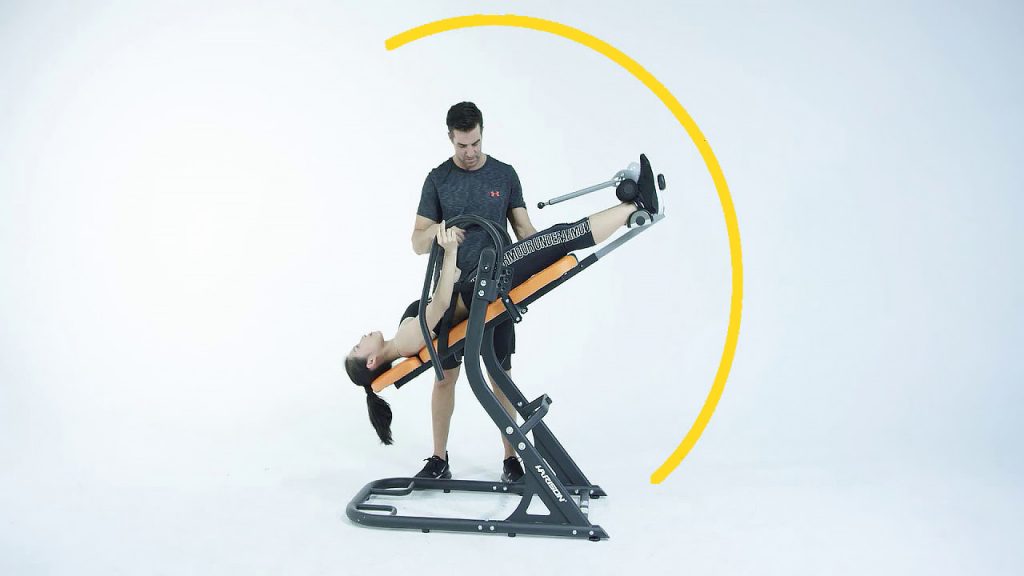Here you can learn how to use an inversion table to improve your spine health. Even if you are careful with your body and how you take care of it, there are many ways you can put pressure on your spine.
One common example of this is the pressure that gets put on your spine every day simply by living your life. Because of this pressure, you can experience back pain and other health problems.

Finding ways to combat the negative effects of everyday pressure on your spine can help ease pain and help ensure you can live a happy, healthy life. One of the solutions to deal with back pain is inversion therapy, which takes the pressure off your spine to ease your pain. If you have been thinking about getting an inversion table or just want to know How to use an inversion table, this article can help.
What is an inversion therapy?
Inversion therapy has been gaining attention lately as more research highlights its benefits, and more people are trying to put it into practice. Inversion therapy is a type of physical therapy that can be used to relieve symptoms of certain types of back problems.
Most often, inversion therapy requires an inversion table to perform. With the table, you suspend yourself upside down to relieve the pressure on your spine that comes from daily living. This can be an effective way to find relief from back pain and other symptoms that come from stress on the spine.
Inversion therapy can be done by standing on your head, such as in yoga positions, but inversion therapy equipment is also frequently used, especially for beginners.
Inversion tables stabilize your inversion, allow you to stay inverted for longer periods of time at once and minimizes the risk of falls or injuries during inversion therapy.
Along with inversion tables, equipment that can help with inversion therapy are inversion chairs and gravity boots. Many prefer inversion chairs because they put less pressure on the legs during inversion. Many people prefer gravity boots because they allow for more maneuverability.
The type of inversion equipment used, if any, depends on your physical health and ability. It is important to consult with a doctor before starting inversion therapy. If you use yoga poses for inversion therapy, they should be done with the guidance and supervision of a trained yoga instructor.
Potential benefits of inversion therapy

Since the idea of inversion therapy is that it relieves pressure on the spine, there are numerous potential benefits of its use. Understanding the benefits can help you determine if inversion therapy would be a good solution for your needs. Three major benefits of inversion therapy are pain reduction, spinal health, and prevention of invasive interventions.
Pain reduction
The primary benefit of inversion therapy is the reduction of back pain. One of the reasons people experience chronic back pain is because of the pressure on their spines daily. Inversion therapy can help deal with this pain and discomfort to provide relief.
Spinal health
Since inversion therapy reduces pressure on the spine, one of its benefits of it is improved spine health. Many people regularly visit chiropractors for spinal adjustments. Inversion therapy can address some of those same needs, which helps counteract the negative effects of pressure on the spine.
Prevent invasive interventions
By addressing spinal health concerns through inversion therapy, you may be able to find relief for chronic pain and prevent the need for further health interventions, including surgery.
How to adjust the inversion table

An important key to success in inversion therapy is making sure the inversion table is adjusted properly. Your inversion table should come with instructions for safely adjusting the height of the table. When you lay on the table, your head should rest comfortably on the bed without hanging over the edge.
Be sure to follow the manufacturer’s instructions for adjusting your inversion table so that you will stay safe when using it for inversion therapy.
Once the height of the table is adjusted, you will need to decide the degree of inversion. Most tables have a strap that can be adjusted to the appropriate degree. The degree you select will be the degree to which you are inverted. For example, a 90-degree inversion will place you parallel to the floor. A 180-degree inversion will place you perpendicular to the ground with your feet up and your head down.
How to Use an Inversion Table: Recommendations for beginners
Like any therapy or exercise program, inversion therapy cannot be mastered overnight. Here are some recommendations that can help your therapy to be more effective at the beginning of the process.
- Consider starting the board at a slant, such as ninety degrees, and gradually increase the inversion as you get used to it.
- Start with a shorter length of time and gradually increase the time as you get used to it.
- Check with your doctor before beginning inversion therapy, especially if you have blood pressure problems or vascular headaches.
- Return to an upright position slowly.
- Stretch your muscles and joints before every inversion therapy session.
Basic exercise step-by-step

There are two primary approaches for How to use an inversion table. The first is basic inversion therapy, and the second is to use exercises on the inversion table.
Basic inversion therapy
When you are using inversion therapy to relieve back pain and stress on your spine, it is enough to hang inverted for a short period of time simply. This counteracts the pressure put on the spine from gravity, helping ease back pain and its long-term effects on your spine.
Inversion exercises
When you use inversion therapy to ease back pain, simply hanging inverted is beneficial. However, you can also do simple exercises while on the inversion table to help burn fat and build muscle. One effective exercise is inverted crunches. You can do inverted crunches on your inversion table by:
- Position yourself on the inversion table with a minimum of a 90-degree inversion.
- Cross your arms over your chest.
- Lift your torso approximately halfway between the table and your knees, then return to your starting position.
- Repeat this process a minimum of ten times.
Risks of inversion therapy
Though there are many benefits to inversion therapy, there are also potential risks that need to be taken into consideration if you are thinking about using an inversion table. These risk factors may not prevent you from doing inversion therapy, but they may require that it only be under the careful supervision of your doctor.
Most often, the risks of inversion therapy are associated with specific conditions or diseases because of the effect inversion has on the body and its systems. These conditions include:
- Joint and bone disorders, such as spinal injuries, herniated disk, arthritis, and osteoporosis
- Cardiovascular disorders, such as heart disease, high blood pressure, stroke, or high risk for a stroke
- Other diseases or infections, such as glaucoma, ear infections, or pink eye (conjunctivitis)

The nature of inversion therapy can exacerbate these conditions or cause further complications for you. While everyday living can put pressure on your spine and cause pain, it is important to remember that inversion therapy is contrary to what your body expects, and that can lead to adverse effects, as well. This is especially true if you have health problems in a certain body system. Along with these conditions, there are risk factors that may lead your doctor to recommend against inversion therapy. These factors include:
- Obesity
- Pregnancy
- Retinal detachment
- Taking medications to clot the blood
If any of these conditions applies to you, you should avoid inversion therapy.
Even if these risk factors do not apply to you, it is important to consult with your doctor before using an inversion table. Because there are risk factors associated with inversion therapy, it is essential to speak with your doctor before starting inversion therapy. Your doctor can give you a full examination and discuss any risk factors with you, making a recommendation as to whether inversion therapy is safe for you or not. This will give you a better picture of whether the benefits will outweigh the risks if you start an inversion therapy plan for your health and well-being.
Whether you have been researching ways to ease your back pain or your doctor has recommended inversion therapy to help ease your symptoms of back pain, it is important to make sure you have all the information you need before starting your inversion therapy plan.
Once you have the information you need and get clearance from your doctor to start inversion therapy, you can start incorporating it into your life little by little. Then, after a while, you’ll start to feel the benefits of inversion therapy, which allows you to live a happy, healthy life.